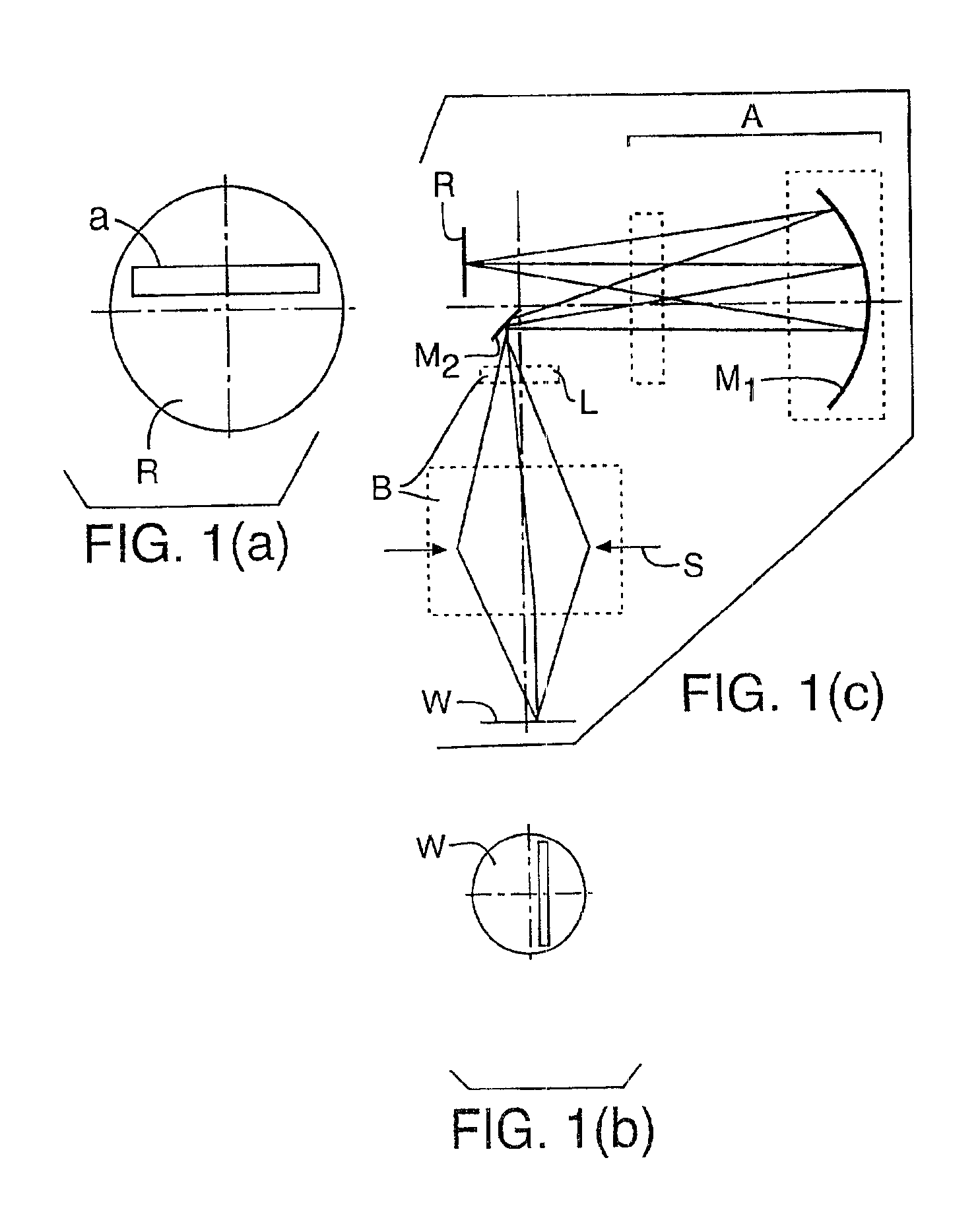Dual-imaging optical system
- Summary
- Abstract
- Description
- Claims
- Application Information
AI Technical Summary
Benefits of technology
Problems solved by technology
Method used
Image
Examples
example embodiment 1
FIG. 3 shows an optical-path diagram of Example Embodiment 1 of a catadioptric optical system according to the present invention. As shown in FIG. 3, an excimer laser E is configured to illuminate the reticle R. The optical system of FIG. 3 can be used with the respective embodiment of FIGS. 1(a)-1(c) or of FIGS. 2(a)-2(c). In FIG. 3, the reflecting surface M2 is planar, and the surface of lens element L in the optical system nearest to the reflecting surface M2 is aspheric.
FIG. 4 shows an expanded optical-path diagram of Example Embodiment 1. That is, in order to avoid the complications of reflected light in the drawings, the light rays are shown in FIG. 4 as always propagating in the same direction.
Table 1 below lists the surface data of Example Embodiment 1. The optical path of FIG. 4 is set forth in Table 1 with the reflecting surface M3 omitted and with a flat reflecting surface inserted, as surface 10, to represent the unfolding of the optical path as shown in FIG. 4. In Table...
example embodiment 2
FIG. 6 shows an optical path diagram of Example Embodiment 2 of a catadioptric optical system according to the present invention. The optical system of FIG. 3 can be used with the respective embodiment of FIGS. 1(a)-1(c) or of FIGS. 2(a)-2(c). In FIG. 3, the reflecting surface M2 is aspheric, and the optical surface of lens L in the optical system B nearest to the reflecting surface M2 is spherical.
Table 3 below lists the surface data of Example Embodiment 2. An optical path corresponding to FIG. 1 is set forth in Table 3, with the mirror M3 omitted. As in Table 1, in Table 3, the first column lists the surface number from the reticle R; the second column, labeled “r”, lists the radius of curvature for each of the surface; the third column, labeled “d”, lists the axial distance from each surface to the next surface; the fourth column list the material for each lens; and the fifth column lists the group designation for each optical element. The surface featuring an asterisk (*) in th...
PUM
 Login to view more
Login to view more Abstract
Description
Claims
Application Information
 Login to view more
Login to view more - R&D Engineer
- R&D Manager
- IP Professional
- Industry Leading Data Capabilities
- Powerful AI technology
- Patent DNA Extraction
Browse by: Latest US Patents, China's latest patents, Technical Efficacy Thesaurus, Application Domain, Technology Topic.
© 2024 PatSnap. All rights reserved.Legal|Privacy policy|Modern Slavery Act Transparency Statement|Sitemap



